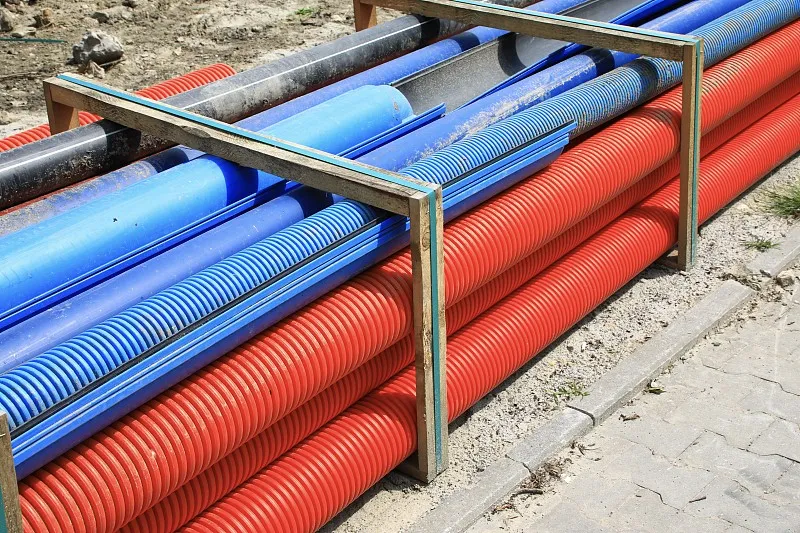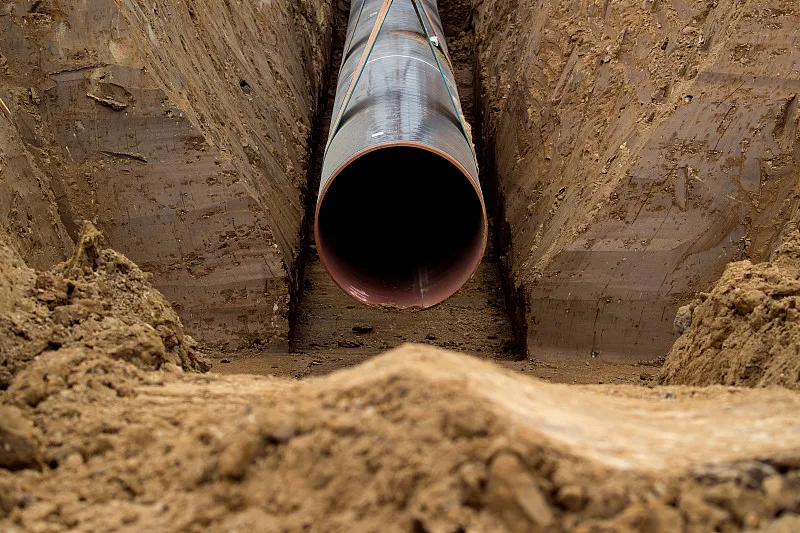Introduce PPR Pipe
When it comes to modern plumbing systems, the choice of pipe material is critical in ensuring long-term reliability, durability, and efficiency. One material that has gained significant popularity in both residential and commercial plumbing installations is PPR Pipe (Polypropylene Random Copolymer). Known for its exceptional qualities, PPR pipe is an ideal solution for transporting both hot and cold water. Its unique combination of characteristics makes it a versatile and cost-effective choice for any plumbing system.
In this article, we will explore why PPR pipe is the preferred option for hot and cold water systems. We will cover its benefits, properties, installation process, and its advantages over other materials. By the end of this article, you will have a better understanding of why PPR pipe is a reliable solution for your plumbing needs.
What is PPR Pipe?
PPR pipe is made from polypropylene, a type of plastic that is highly resistant to chemicals, temperature changes, and physical stress. Polypropylene is a thermoplastic polymer, and when it is combined with random copolymerization, it creates a robust, flexible, and durable pipe material. PPR pipes are used in various plumbing applications, including potable water systems, irrigation, and heating systems, with a particular emphasis on both hot and cold water distribution.
One of the key features of PPR pipe is its ability to withstand both high and low temperatures without compromising its integrity. This makes it an ideal material for transporting hot and cold water throughout a building or facility.
Properties of PPR Pipe
- Temperature Resistance: PPR pipes can handle temperatures ranging from -10°C to 95°C (14°F to 203°F), making them ideal for both hot and cold water systems.
- Corrosion Resistance: PPR pipes do not rust or corrode over time, unlike metal pipes. This resistance to corrosion ensures the purity of the water supply and increases the lifespan of the system.
- Smooth Interior Surface: The smooth internal surface of PPR pipes helps reduce friction, preventing the buildup of sediment or scaling, which is especially beneficial in hot water systems where scale can accumulate.
- Durability: PPR pipes are resistant to physical damage, impact, and abrasions. They are also highly resistant to stress and pressure, which makes them reliable in high-pressure systems.
- Leak-Proof Connections: PPR pipes are typically joined using a fusion welding process, which creates leak-proof connections and eliminates the risk of leaks that are common with other pipe materials like threaded or glued connections.
- Non-Toxic: PPR pipes do not leach harmful chemicals into the water, making them safe for potable water applications. This property makes them ideal for use in homes and buildings where clean, safe water is essential.
Why Choose PPR Pipe for Hot & Cold Water Systems?
1. Versatility
PPR pipes are suitable for both hot and cold water systems, offering a single solution for a wide range of plumbing needs. They can be used in residential applications for bathroom and kitchen piping, in commercial buildings for office complexes and industrial facilities, and even in large-scale infrastructure projects for municipal water systems.
Whether you are installing a new plumbing system or replacing old pipes, PPR pipes provide a flexible and adaptable option for various water distribution needs.
2. Energy Efficiency
One of the significant advantages of using PPR pipes for hot water systems is their excellent thermal insulation properties. The smooth surface of the pipe and its inherent insulation capabilities help reduce heat loss, which is especially important in hot water systems where energy efficiency is a priority.
Using PPR pipes for both hot and cold water helps reduce energy consumption and lowers heating costs. The pipes retain heat for longer periods, meaning your water heating system doesn’t have to work as hard to maintain the desired temperature. This results in energy savings over the life of the system.
3. Long Service Life
PPR pipes are known for their impressive longevity. When installed properly, these pipes can last for decades—typically between 50 and 100 years. The durability of PPR pipes is a key reason why they are so popular in modern plumbing systems. With proper maintenance and care, PPR pipes offer an extremely long service life, far outlasting many other materials such as copper or PVC.

4. Resistance to Scaling and Corrosion
One of the major drawbacks of using metal pipes for hot and cold water distribution is the risk of corrosion and scaling over time. In hot water systems, corrosion and scale buildup can lead to blockages, reduced flow, and costly repairs. PPR pipes, on the other hand, are highly resistant to corrosion and do not develop scale deposits inside. This is especially important for hot water systems, as it ensures the pipes maintain their efficiency and integrity over time.
Moreover, since PPR pipes are resistant to corrosion, the water quality remains high. There is no risk of rust or metallic taste in the water, ensuring a clean and safe water supply.
5. Ease of Installation
The installation of PPR pipes for hot and cold water systems is relatively simple and quick. One of the key benefits of PPR pipe installation is the fusion welding technique used to join the pipes. This process involves heating the ends of the pipes and fittings until they melt slightly, then pressing them together to create a strong, permanent bond. Fusion welding ensures that the joints are leak-proof and durable.
Additionally, PPR pipes are lightweight, making them easy to handle and transport to the installation site. This can reduce both the time and cost of installation compared to heavier materials like copper or steel.
6. Cost-Effectiveness
PPR pipes are a cost-effective choice for both residential and commercial plumbing. Although the initial cost of PPR pipes may be slightly higher than PVC or galvanized steel, the long-term savings far outweigh the initial investment. The long service life, minimal maintenance requirements, and energy efficiency make PPR pipes a great value for money.
7. Safety and Environmental Benefits
PPR pipes are non-toxic and do not leach harmful substances into the water supply, making them an environmentally friendly and safe option for potable water systems. Furthermore, PPR pipes are recyclable, which reduces their environmental impact once they reach the end of their life cycle. Choosing PPR for hot and cold water systems aligns with sustainability goals and eco-conscious building practices.
Applications of PPR Pipe for Hot & Cold Water
PPR pipes are incredibly versatile and can be used in various applications, including:
- Residential Plumbing: PPR pipes are ideal for supplying hot and cold water to bathrooms, kitchens, and other areas in the home.
- Commercial Plumbing: In office buildings, shopping malls, and hotels, PPR pipes are used to distribute hot and cold water to multiple outlets efficiently.
- Industrial Applications: For manufacturing plants, factories, and industrial facilities, PPR pipes can be used for transporting hot and cold water, especially in systems requiring resistance to high temperatures and pressures.
- Heating Systems: PPR pipes are commonly used in underfloor heating systems, radiators, and other heating solutions due to their ability to withstand hot water temperatures and prevent heat loss.
Installation Process of PPR Pipe for Hot & Cold Water
Installing PPR pipes for hot and cold water is straightforward, especially when using fusion welding. The installation steps typically include:
- Preparation: Measure and cut the PPR pipes to the required length using a pipe cutter or saw. Ensure that the cuts are straight and clean to guarantee a secure fit.
- Fusion Welding: Heat the ends of the PPR pipes and the fittings using a fusion welding machine. This machine ensures that the temperature is consistent across the joint, resulting in a secure, leak-proof connection.
- Joining the Pipe and Fitting: Once the pipe and fitting are heated to the appropriate temperature, press the two pieces together and hold them for a few seconds to allow the fusion process to take place.
- Cooling: Allow the welded joint to cool and solidify before testing the system for leaks.
- Pressure Testing: Once the system is fully assembled, conduct a pressure test to ensure that all joints are secure and leak-free.
Maintenance of PPR Pipes for Hot & Cold Water
Maintaining PPR pipes is relatively simple due to their durability and resistance to corrosion. However, it’s still important to carry out regular inspections and basic maintenance to ensure the system remains in optimal condition:
- Inspection: Periodically check for leaks or signs of wear at the joints, especially if the system is exposed to high temperatures or pressure.
- Cleaning: In areas with hard water, you may need to clean the pipes occasionally to remove any mineral deposits that might form inside.
- Pressure Testing: Regularly test the system’s pressure to ensure that the pipes and joints are functioning correctly and are not under undue strain.
Conclusion
PPR pipe is an excellent choice for both hot and cold water systems due to its durability, resistance to corrosion, and energy efficiency. Whether you’re installing a plumbing system in a new building or upgrading an existing one, PPR pipe provides a cost-effective, long-lasting solution. With its long service life, ease of installation, and ability to withstand high temperatures and pressures, PPR pipe is an ideal choice for a wide range of plumbing applications.
Frequently Asked Questions (FAQ)
1. Can PPR pipe be used for both hot and cold water?
Yes, PPR pipe is suitable for both hot and cold water systems. It can withstand temperatures ranging from -10°C to 95°C (14°F to 203°F), making it ideal for a wide range of applications.
2. How long does PPR pipe last?
PPR pipe can last anywhere from 50 to 100 years, depending on factors such as installation quality, maintenance, and operating conditions.
3.Is PPR pipe resistant to corrosion?
Yes, PPR pipe is highly resistant to corrosion. Unlike metal pipes, PPR pipes do not rust or corrode over time, which ensures the water remains clean and uncontaminated, providing a longer lifespan for your plumbing system.
4.What is the installation process for PPR pipes?
The installation process for PPR pipes involves cutting the pipes to the desired length. Using a fusion welding machine to heat the ends of the pipes and fittings. And then joining them to form a secure, leak-proof connection. After installation, a pressure test is conducted to ensure the system is properly sealed and free of leaks.
5.Are PPR pipes environmentally friendly?
Yes, PPR pipes are eco-friendly. They are non-toxic, do not leach harmful chemicals into the water, and are recyclable. Making them a sustainable choice for modern plumbing systems. Their long lifespan and low maintenance requirements also contribute to reducing environmental impact.


















